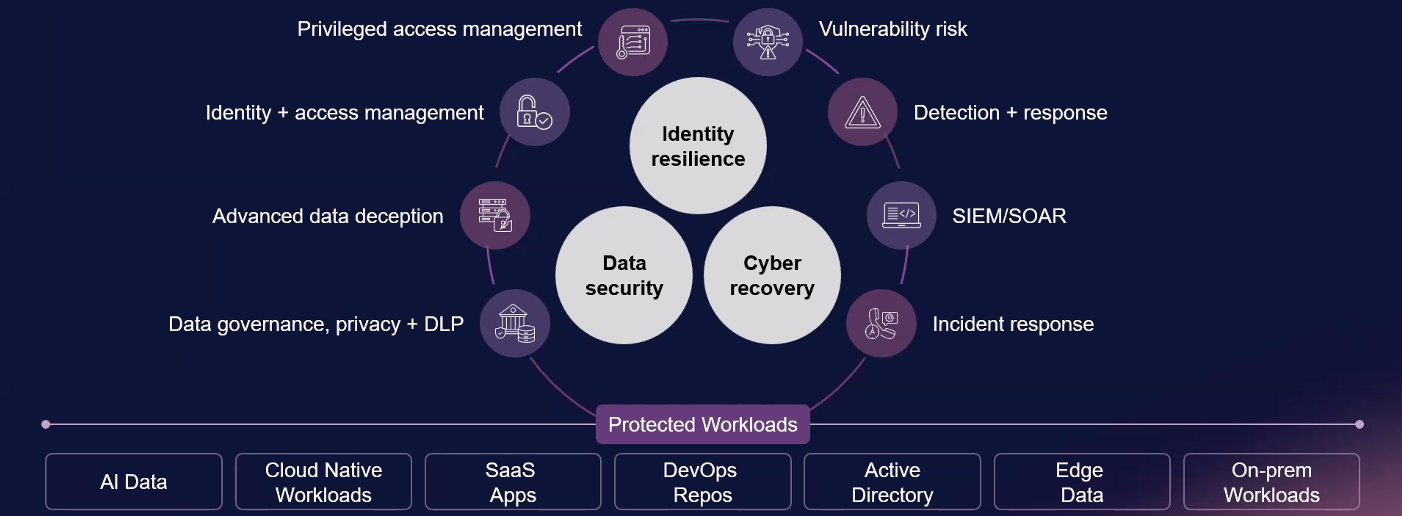Commvault SHIFT 2025

If you had “Multi-Cloud”, “AI”, and “single-pane-of-glass” on your conference bingo card, you wouldn’t have been disappointed at this event. However, it does feel that Commvault has worked hard to bring the benefits of these concepts into the core of their platform, rather than acknowledging the buzzwords and tacking features on as an afterthought. Artificial Intelligence, for example, is being used to simplify operations. Workloads can be automatically discovered by Commvault Cloud and then AI technology is used to recommend a classification-based protection policy. Data is often fragmented across multiple silos, and AI is good at finding it, enabling Commvault Cloud to present a unified view of where an organisation’s data is.
The release name “Unity” means there is a focus on a unified platform. Multi-cloud support aims to provide a unified experience and unified capabilities, whether the workload is in a hyper-scaler such as AWS or Azure, or in a hosted or on-premises environment. A single platform brings IT staff in various tech stacks and silos into one place, using the same data. Organisations should be able to avoid the situation
where the Ops team have been running a workload but Cyber weren’t aware of it, or the Recovery team weren’t protecting it.

In all the announcements at SHIFT, the new Synthetic Recovery feature caught my eye. This provides AI-driven recovery to a clean state following an attack, promising no manual steps or scripting is required. Normally with a ransomware recovery we’ve been faced with the challenge of finding the “last known good” state, the backup before the system was compromised, and rolling everything back to that date. This leads to a lot of unnecessary data loss. For example if the system was infiltrated a month ago, but some files weren’t attacked until last week, we’d be rolling back the whole environment to that month-old backup and losing the intermediate work on those files which we have good copies of. Synthetic Recovery works differently, bringing the most recent trusted version of a file back, rather than the most recent version of the entire workload where everything was trusted. The following chart demonstrates this use of multiple backup points to make a clean recovery.

On the Identity front, Commvault Cloud Unity hooks into your Active Directory environment, spotting anomalies and catching threat actors quickly. This enables prompt reporting and roll-back- the quicker an attack is detected the less data is potentially lost. Good visualisations of an attack within the Commvault platform are backed with integrations into an organisations SIEM/SOAR toolsets, enabling data-driven decision making to protect your environment. In terms of recovery, Commvault Cloud enables a forest-level recovery into their Cleanroom Recovery technology, giving an isolated space to validate before returning identity configurations to production.
In summary, the big announcements at this SHIFT event were the new Commvault Cloud Unity release bring in the next generation of the Commvault Cloud Platform. There’s a big focus on unity, both on the supported workloads and the teams doing that supporting. Identity resilience is advancing, particularly when detecting and reversing Active Directory threats. And finally, Synthetic Recovery is delivering clean recoveries with minimised data loss.

Early access to this new release is available November 2025, with General Availability expected in December or early 2026. For more information on any of these announcements check out the Commvault Website
#CommvaultSHIFT #ContinuousBusiness #CyberResilience #AI Resilience #CommvaultCloud #ResOps